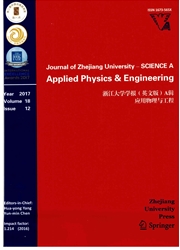

 中文摘要:
中文摘要:
目的:为解决煤种频繁变化造成的燃烧闭环优化难题,研究在燃烧器出口实时辨识锅炉入炉燃烧煤种的方法。创新点:1.通过火焰发射光谱机理研究获取可排除燃烧工况与测量采样等干扰因素的算法规则;2.提出基于煤粉火焰光谱中Na和K元素原子发射光谱相对强度特征的煤种辨识方法。方法:1.通过光纤光谱仪获取锅炉各层燃烧器入口火焰光谱信号;2.利用同波长下原子光谱与连续辐射光谱的相对关系,消去火焰温度、工况与环境的影响;3.以补偿后Na和K元素原子发射光谱强度的特征比值表征不同煤种在火焰中的元素含量特征,实现煤种的在线辨识。结论:1.利用煤粉火焰光谱特征实现入炉煤种的实时辨识具有良好的工况稳定性与可复现性;2.从算法机理中消除环境影响,降低了测量系统校验的复杂性。
 英文摘要:
英文摘要:
This paper presents a novel method of identifying coal type based on mechanistic methods. The ratio of the resonance line spectrum of a luminous flame and the continuous spectrum at the same wavelength eliminates the influence of temperature on spectral intensity. The atomic line spectra of Na and K are typical and significant over continuous flame spectra. The concentrations of elemental Na and K in the flame are exclusively relative to coal type and composition. Using an experimental furnace and charge-coupled device(CCD) optical spectrometer apparatus, the continuous spectra and atomic line spectra of Na and K elements were sampled from coal flames in real time. An empirical fitting method was used to simplify the formulas of absorption strength and flame temperature calculation, and rational solutions were obtained by using an iterative algorithm. Due to the change in reaction rate and absorption by soot particles, the relative contents of Na and K in a flame vary with the temperature and absorption strength. Arrhenius' s equation for temperature compensation was adopted. Compensation for soot density in the furnace was also satisfied by an exponential expression. At any one sampling position, the compensation parameters were identical for all coal types. After compensation for temperature and density of soot particles, the relative strength of the Na and K signals and the ratio between them uniquely matched the coal type burnt in various conditions. The results were replicated and verified in various conditions, and the response time of the system was of the order of seconds.
 同期刊论文项目
同期刊论文项目
 同项目期刊论文
同项目期刊论文
 期刊信息
期刊信息
